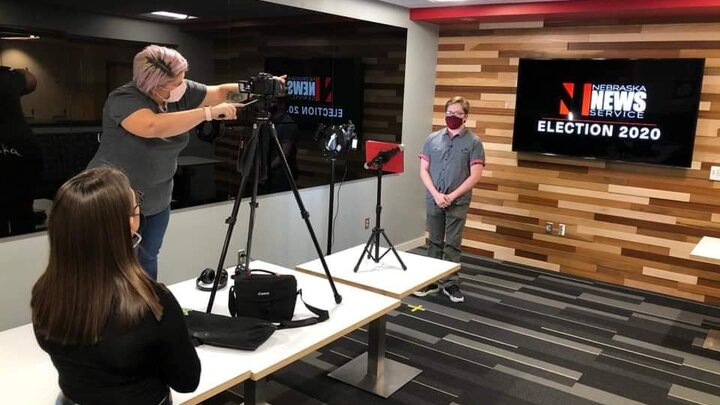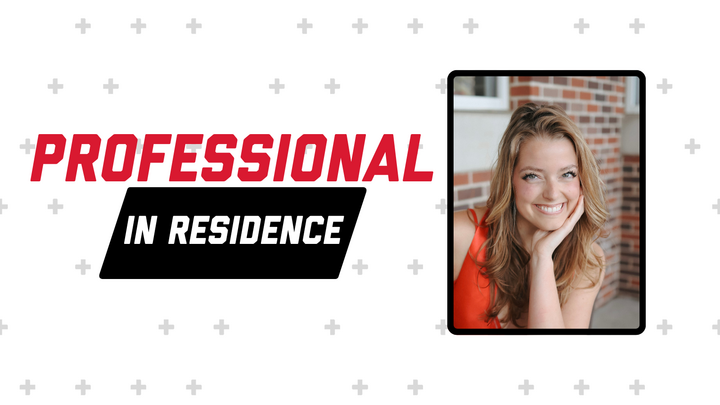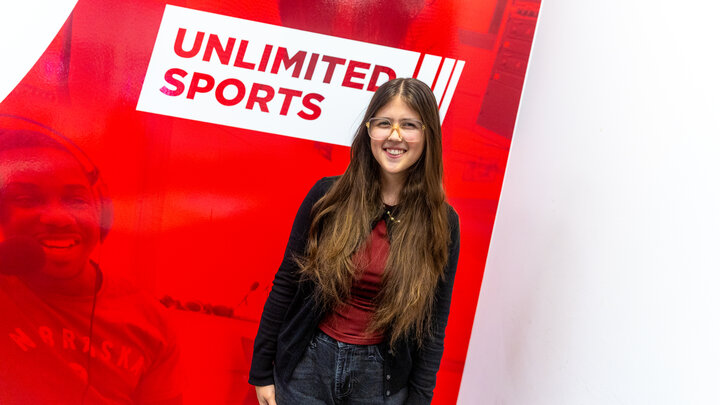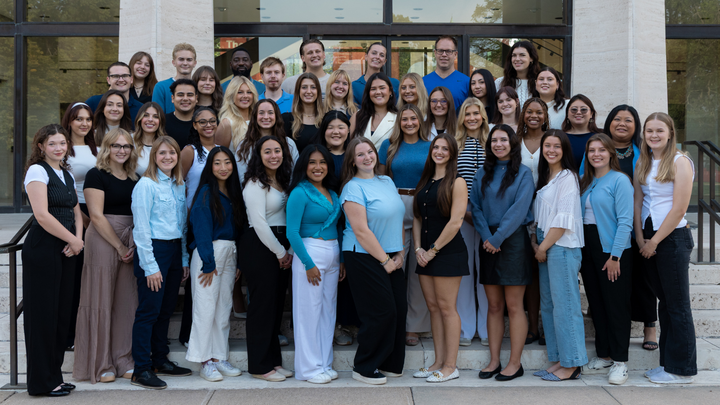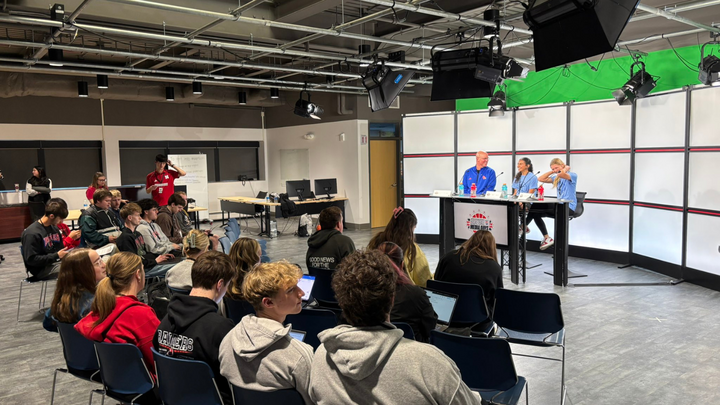Throughout 2020, College of Mass Communications and Journalism students had the opportunity to experience the process of American democracy in a few different ways.
The first opportunity was in the beginning of February when twelve students traveled to Iowa to report on the caucuses. They made connections with news organizations, photographers and multimedia journalists from all over the country and world. CoJMC faculty members Jill Martin, Olga Pierce and John Shrader accompanied the students.
Students reported caucus updates through the Nebraska News Service with continuous articles, videos, social media and photography updates on its website and social media accounts.
Senior journalism major John Eirinberg’s most memorable moment was when he was working on a live standup with a fellow student.
“I was talking about the app being used to report votes. I had just read about it on the New York Times blog. A newscaster asked me where I was getting my information. I was surprised that a professional was asking me how I figured something out,” Eirinberg said. “I would definitely take part in an event like that again. It was stressful, at times, frustrating and a lot of fun.”
Soon after the Iowa caucuses, Covid-19 interrupted the flow of daily life, but that didn't stop the Nebraska News Service from reporting on news happening around Nebraska. Knowing Covid would have an impact on student internship opportunities, Nebraska News Service gave students the opportunity to apply for a summer internship.
The next opportunity for students to interact with the election was at the start of the Fall 2020 semester. CoJMC offered two courses focused on American democracy.
Political Campaign Communication was taught by Deb Fiddelke, UNL Chief Communication and Marketing Officer.
Fiddelke worked on a handful of political campaigns early on in her career. She served as press secretary during Chuck Hagel’s 1996 Senate campaign, and was Hagel’s communications director and senior policy adviser during his first term.
From 2004-2008, she worked as a special assistant to the president for legislative affairs where she advised five cabinet appointees through their Senate confirmation hearings. Working in the White House, she promoted the legislative priorities of President George W. Bush in the Senate.
She finished out her time at the White House as point person in negotiating immigration legislation in the senate in 2007, her last project was shepherding the reauthorization of the president’s international AIDS program through Congress in 2008.
Fiddelke dove into her different communicative roles in Washington, including deputy assistant to the president for legislative affairs, to drive class discussion. Students learned the strategy and execution behind a political campaign.
For the students’ final project, they ran their own campaigns with a fictional candidate for Congress where each student played a different role on campaign staff.
The end goal was for the class to understand how the roles that make up a political campaign parallel many of the roles in a public relations, advertising or public affairs firm.
The 17 students in special topics course JOMC 391: Media and the Election led by faculty member Maria Marron, spent the semester analyzing different news sources for bias in reporting.
Each student chose a news source to monitor the entire semester. They poured through any story that could potentially impact the presidential election with bias reporting. Students covered media organizations like The New York Times, NBC, Fox News, Huffington Post, CNN, etc.
Before the election, each student chose which candidate they believed would win based on the media outlet they’d been monitoring. All said Biden except a student who covered an international news outlet.
The students’ key realizations? It’s necessary to not only hold the media accountable but also the people who are consuming said media. The class found bias in every media outlet they researched, filtering out the facts from each news source was the key to finding the need-to-know.
